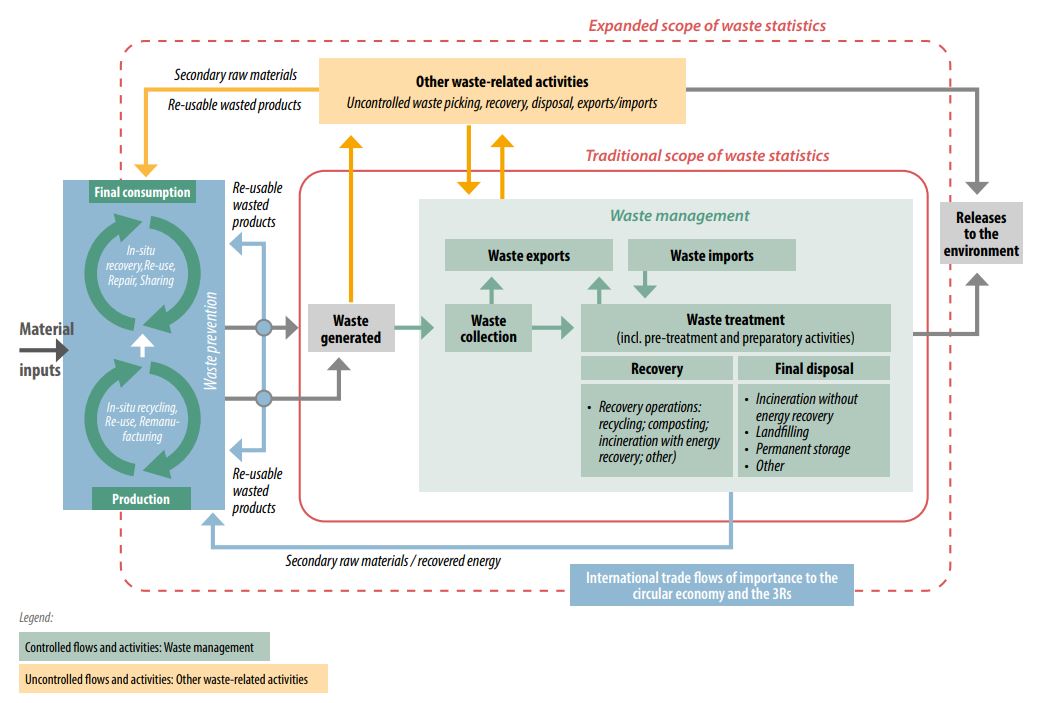UN Economic Commission for Europe | Source | Download |
The UNECE/OECD Guidelines for Measuring Circular Economy provide a comprehensive framework for defining and tracking circular economy (CE) progress. Part A outlines the CE concept, introduces a harmonized set of indicators, and discusses measurement considerations linked with the System of Environmental-Economic Accounting (SEEA). Part B, forthcoming, will offer practical guidance for implementing these indicators and fostering institutional collaboration.
Key Concepts
- Circular Economy Definition: An economy aimed at maximizing the value of materials by keeping them in use for as long as possible, minimizing resource input, and reducing waste and environmental impacts throughout the product lifecycle.
- 9R-Framework: Focuses on closing, slowing, and narrowing resource loops.
Framework Structure
- Material Life-cycle and Value Chain: Covers material basis, circularity, and efficiency.
- Interactions with the Environment: Assesses resource depletion and environmental impacts.
- Responses and Actions: Includes support for circular design, waste management, innovation, and financial flows.
- Socio-economic Opportunities: Examines market developments, trade, skills, and inclusiveness.
- Indicators: The framework includes 19 core indicators, with categories such as material consumption, waste management, resource implications, and socio-economic impacts. It emphasizes policy relevance, analytical soundness, and measurability.
Recommendations
- Develop improved economic classifications and green taxonomies for better CE metrics.
- Create physical supply and use tables to measure material flows.
- Address gaps in indicator definitions and data quality.
Figure | CES Framework for Waste Statistics, embedded in a broader context


